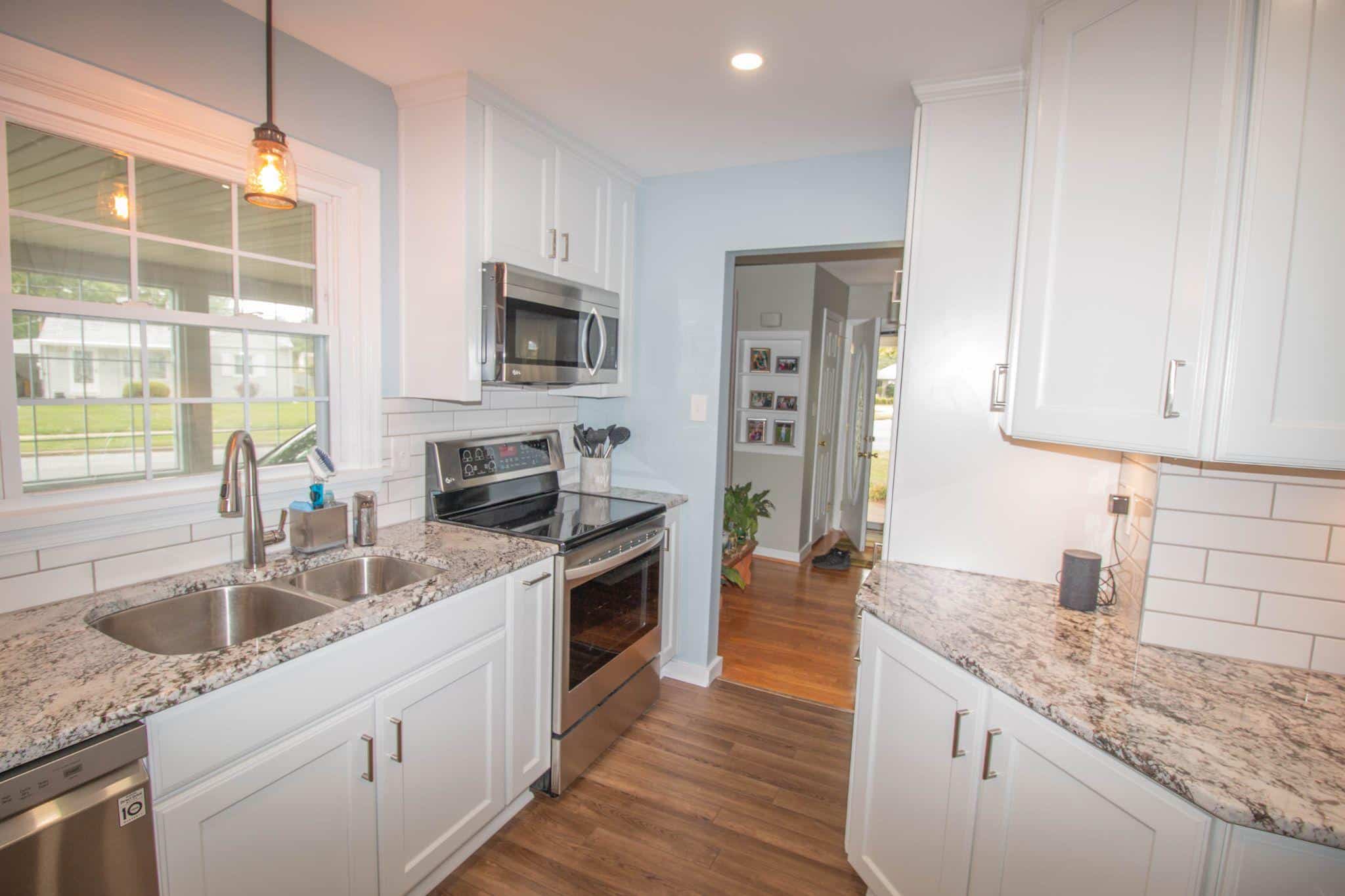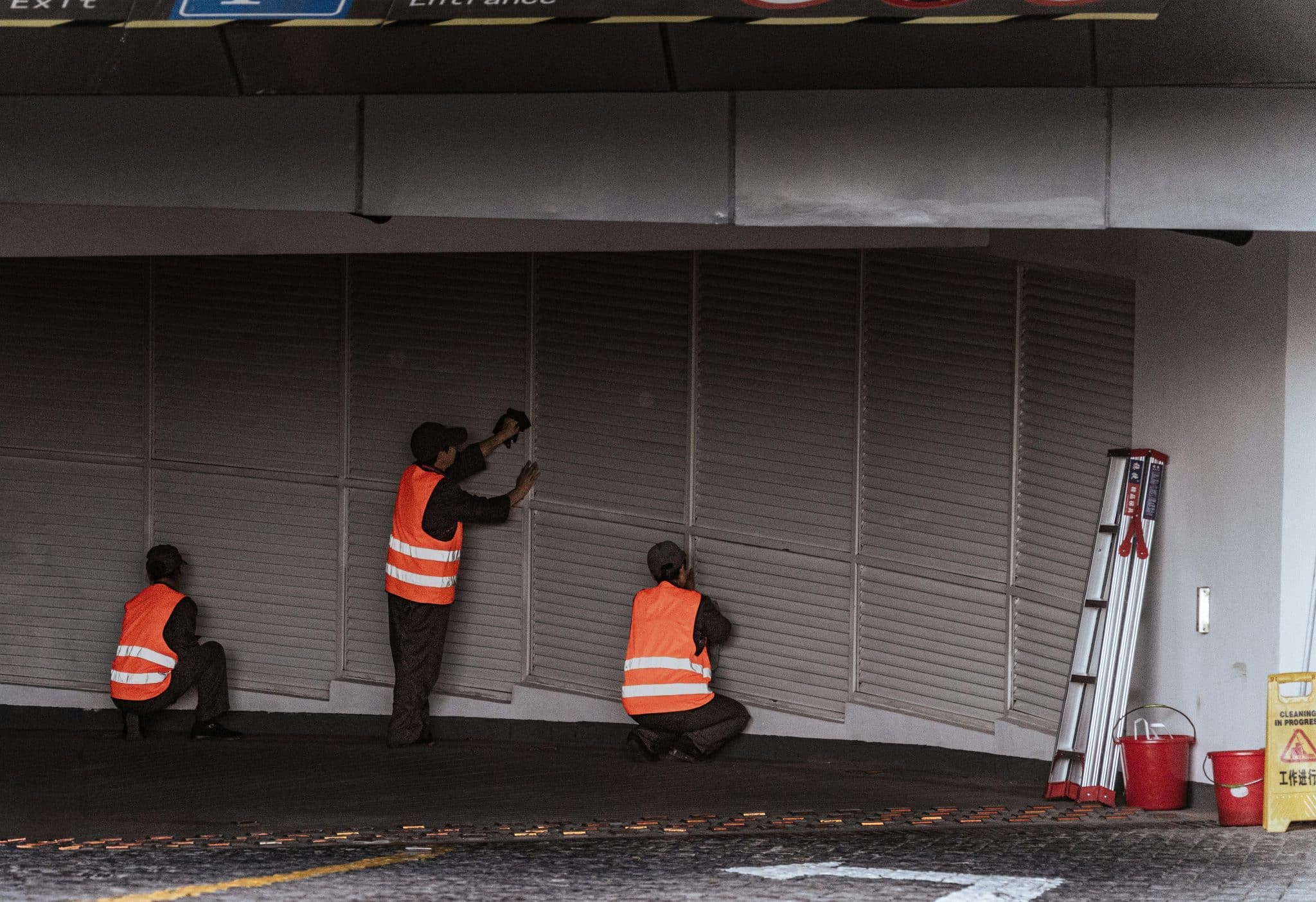I noticed a thin crack running down my living room wall last month, and I’ll bet you’ve spotted something similar in your home too.
Here’s what most homeowners don’t realize: not all wall cracks are created equal. Some are harmless cosmetic issues you can fix with paint, while others signal serious structural problems that could cost thousands if ignored.
I’ve spent years learning to identify different crack types, and I want to share that knowledge with you. Understanding what each crack means can save you money, stress, and help you make smart repair decisions.
In this guide, I’ll walk you through the most common wall crack types, what causes them, when to worry, and how to fix them yourself versus when to call professionals.
What Are Wall Cracks?
Wall cracks can appear in any home, and knowing what causes them helps you decide when to worry. Most cracks happen because buildings naturally settle over time, temperature changes make materials expand and contract, or moisture affects the structure.
Every homeowner will likely see some wall cracks at some point. The good news is that many cracks are completely normal and don’t threaten your home’s safety. However, some cracks signal more serious problems that need professional attention.
What you should know about wall cracks:
- The size, location, and direction of cracks tell you different things about your home’s condition
- Small cracks under 1/8 inch wide are typically minor cosmetic issues that you can often fix with simple patching and paint
- Larger cracks, especially those you can fit a coin into, deserve closer inspection and may indicate foundation movement or structural settling
- New cracks that develop quickly or existing cracks that suddenly grow larger need immediate attention
- Slow-developing cracks over months or years are usually less concerning than rapid changes
- The materials in your walls also affect cracking patterns – drywall, plaster, and different foundation materials each crack differently under stress
Understanding these basics helps you make informed decisions about which cracks need professional help and which ones you can handle yourself.
Common Types of Cracks in Walls
Not all wall cracks are the same – each type has different causes, warning signs, and repair needs. Here’s what you need to know about the most common crack patterns and when they signal trouble.
1. Hairline Cracks
Hairline cracks are extremely thin lines that typically measure less than 1/16 inch wide. These fine cracks often appear where walls meet ceilings, around door frames, or in wall corners. They usually develop from normal house settling, minor temperature changes, or slight movement in building materials.
Most hairline cracks are surface-level and don’t penetrate deep into the wall structure. Be concerned when hairline cracks suddenly multiply, grow wider, or appear with other structural signs.
Repair Tip: Clean the crack, apply flexible caulk or paintable sealant, smooth with putty knife, and repaint once dry.
2. Vertical Cracks
Vertical cracks run straight up and down along walls. These cracks commonly appear near corners, windows, or doors where stress concentrates.
Small vertical cracks often result from normal building settlement or seasonal expansion and contraction of materials. However, wider vertical cracks may indicate more serious foundation movement or structural issues. Watch for vertical cracks that exceed 1/4 inch in width or continue growing over time.
Repair Tip: For small cracks, use mesh tape and joint compound. For larger cracks, investigate the cause first, then use fiberglass mesh and multiple compound coats.
3. Horizontal Cracks

Horizontal cracks extend sideways across walls and are often more concerning than vertical ones. These cracks typically indicate significant structural stress, foundation problems, or soil pressure against basement walls. Horizontal cracks in basement walls especially suggest serious issues with foundation integrity.
They commonly appear in concrete block or poured concrete foundations when soil pressure becomes excessive or water damage weakens the structure.
Repair Tip: Stop immediately and call a structural engineer – these require professional assessment before any repair attempts.
4. Diagonal (Stair-Step) Cracks

Diagonal stair-step cracks follow the mortar joints in brick or block walls, creating a stepped pattern. These cracks indicate differential settling where one part of the foundation moves differently from another.
Stair-step cracks commonly appear in masonry walls, chimneys, or brick veneer. They often start small but can grow larger as the foundation movement continues. Professional evaluation is essential for diagonal cracks exceeding 1/4 inch.
Repair Tip: Remove loose mortar, clean joints thoroughly, apply new mortar matching the original, and monitor for reopening.
5. Expansion Cracks

Expansion cracks occur when materials grow due to heat, moisture, or other environmental factors. These cracks often appear during hot weather when materials expand beyond their normal limits.
Expansion cracks commonly develop in concrete driveways, sidewalks, or foundation walls that lack proper expansion joints. They may also appear where different materials meet and expand at different rates.
Repair Tip: Install proper expansion joints where missing, seal existing cracks with flexible sealant that accommodates movement.
Causes of Wall Cracks
Understanding why cracks form helps you identify serious problems early and prevent costly repairs. Here are the main factors that cause walls to crack in homes.
- Foundation Settlement: When soil beneath your home shifts or compresses, it causes uneven foundation movement that creates cracks in walls above.
- Temperature Changes: Hot and cold weather make building materials expand and contract repeatedly, putting stress on walls and creating small cracks.
- Moisture Problems: Water damage from leaks, flooding, or high humidity weakens wall materials and causes them to crack or deteriorate over time.
- Poor Construction Quality: Inadequate materials, rushed construction, or improper building techniques can lead to premature cracking as the structure ages and settles.
- Soil Movement: Clay soil that swells when wet and shrinks when dry creates constant pressure changes that push and pull on foundation walls.
- Structural Overload: Adding weight to your home through renovations or heavy items without proper support can stress walls beyond their designed capacity.
When to Fix Cracks Yourself vs. Calling in the Experts
Choosing between DIY fixes and professional help depends on the crack’s size, cause, and your comfort level with repairs.
| Aspect | DIY Repair | Professional Repair |
|---|---|---|
| Best For | Hairline and small cosmetic cracks | Large, structural, or recurring cracks |
| Cost | $10-50 for materials | $200-2000+ depending on severity |
| Time | 1-3 hours | 1-3 days |
| Tools Needed | Basic patching compound, putty knife, paint | Specialized equipment, structural materials |
| Skill Level | Beginner friendly | Requires professional expertise |
| Warranty | No guarantee | Professional warranty included |
| Safety | Low risk for small cracks | High risk for structural issues |
| Long-term Results | May need frequent touch-ups | Permanent solution for serious problems |
Handle small cosmetic cracks yourself, but call professionals for anything wider than 1/4 inch or showing signs of structural problems.
When to call a professional immediately:Cracks wider than 1/4 inch, rapidly growing cracks that appear overnight, horizontal basement wall cracks, multiple clustered cracks in one area, cracks accompanied by sticking doors or windows, and any cracks that allow water seepage all signal serious structural problems requiring urgent attention.
Preventing Future Wall Cracks
Taking steps now to protect your walls can save you from expensive repairs and structural problems later.
- Control moisture levels: Use dehumidifiers and fix leaks promptly to prevent water damage that weakens wall materials.
- Maintain proper drainage: Keep gutters clean and ensure water flows away from your foundation to prevent soil movement.
- Monitor temperature changes: Use consistent heating and cooling to minimize expansion and contraction stress on building materials.
- Inspect regularly: Check walls monthly for new cracks and address small issues before they become major problems.
- Maintain your foundation: Seal foundation cracks immediately and ensure proper grading around your home’s perimeter.
- Avoid structural overloading: Don’t add excessive weight through renovations without consulting a structural engineer first.
Conclusion
Identifying different types of wall cracks correctly is your first line of defense against costly structural damage. While hairline and small vertical cracks are usually harmless, horizontal basement cracks and rapidly growing fissures demand immediate professional attention.
The key takeaway? Size and location matter more than you might think. Cracks that allow water entry can quickly turn from minor annoyances into major headaches, costing thousands in repairs.
Regular monthly inspections of your walls can catch problems early when they’re still manageable and affordable to fix. Remember, catching foundation issues at the hairline stage is always better than waiting until doors start sticking.
Have you spotted any concerning cracks in your home recently?










